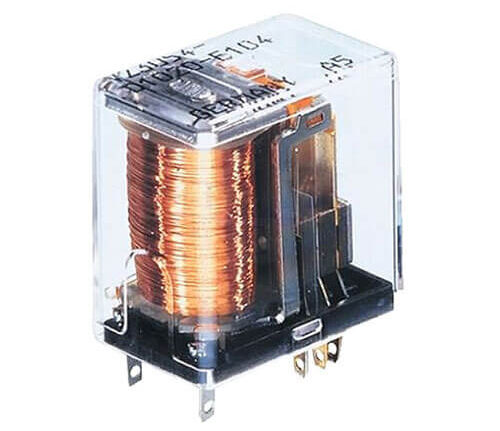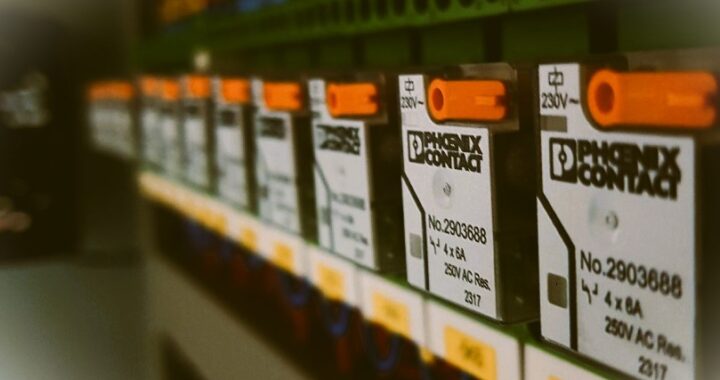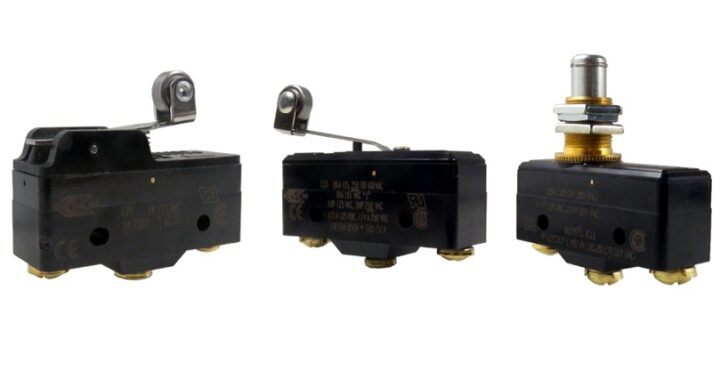Relay Types: A Comprehensive Overview of Relays

The electric relay is one of the most frequently used devices in modern technological systems. It can be found in cars, washing machines, microwave ovens and medical equipment, as well as in tanks, aircraft and ships. Practically no industry would function without relays. In some complex automatic control systems in the industry, the number of relays is estimated at hundreds and even thousands. In the power-generation industry, no power device is allowed to operate without special protection relays. Certain electrical equipment such as power transformers may be protected by several different kinds of relays, each controlling different functions.
Although relays are so widely used and there are so many types, the broad population of engineers is unfamiliar with most of them. After reading the article, you will have a basic knowledge of the relay types.
Relay Types
There are many types of relays available for different applications, but some of the most common types include:
1. Electromagnetic relays
An electromagnetic relay is the simplest, most ancient and most widespread type of relay. Its basic elements are a winding, a magnetic core, an armature, a spring and contacts. The magnetic system is used to transform the input electric current into the mechanical power needed for contact closure.
And the contact system transforms the imparted mechanical power back into an electric signal. An insulation system provides galvanic isolation of the input circuit (winding) from output one (contacts).
2. Latching relays
A latching relay picks up under the effect of a single current pulse in the winding and remains in this state when the pulse stops affecting it, that is when it is locked. Therefore, this relay plays the role of a memory circuit. Moreover, a latching relay helps to reduce power dissipation in the application circuit because the coil does not need to be energized all the time.
3. Thermal relays
Temperature or thermal relays belong to the second (or even probably to the first) most popular type of special-purpose electric relays. There are two basic types of such devices: relays with an input energizing quantity in the form of heat and relays with an input quantity in the form of electric current. Relays of the first type are applied for direct temperature control of different units. Relays of the second type are used as protective relays from current overload, for various electrical customers. In the latter case, the electric current is transformed to the heat inside the relay first, and when the temperature of the internal thermal element reaches a certain value (and the relay is energized)—to an output electric signal.
4. Reed relays
Many engineers have come across original contact elements contained in a glass shell. However, not everyone knows that reed relays differ from ordinary ones not because of the hermetic shell (sealed relays are not necessarily reed ones), but because of the fact that in a reed relay, a thin plate made of magnetic material functions as contacts, magnetic system, and springs at the same time. One end of this plate is fixed, while the other end is covered with some electroconductive material and can move freely under the effect of an external magnetic field. The free ends of these two plates, directed towards each other, are overlapped from 0.2 to 2mm and form a basis for a new type of switching device.
5. High voltage relays
The rapid development of electric technologies applying high voltages (power lasers, industrial accelerators, high-frequency metal, dielectric heating, etc.), the use of power electronic equipment operating under high voltages (radar, TV, and radio transmitters), and also the need for systems for testing insulation of electrical devices of different voltage levels, were the causes that bought about the spread of high-voltage (HV) relays, operating under voltages from 5 to 300 kV and higher. Such relays can be divided into two groups: relays with HV insulation for all current-carrying elements switching high voltages, and relays with low-voltage (LV) contacts and high voltage insulation between the input elements (control coil) and the output ones (contacts).

6. Time relays
One of the most widespread types of relays (after electrical relays) is ‘‘time relays.’’ Usually, these are relays operating with a certain delay concerning the signal applied to the relay input, which is why frequently the term ‘‘time-delay relay’’ is used. As the change of state of a relay is accompanied by a certain delay concerning the signal applied to its input, one can say for sure that, apart from its other functions, every relay also functions as a time relay. Sometimes standard electromechanical relays are used to enhance the stability of complex automatic control systems. Their only function is to provide a certain signal delay, the value of which equals its make delay. In terms of engineering, ‘‘time relays’’ or ‘‘time-delay relays’’ are usually defined as relays in which the time-delay function dominates, and in which the characteristics of that function are enhanced, by one means or another.
7. Current and voltage relays
These relays are specially designed for current or voltage level control in electric circuits of high and low voltage, and for the generation of certain output signals, when the current or voltage level deviates from a preassigned value. Such relays are also called ‘‘measuring relays,’’ since in the process of operation they constantly measure the level of the actuating value. Very often the output signal of such relays affects the power shutdown device, de-energizing the load and thus protecting it (or the main supply) from damages in emergency modes, which is why such relays are also called ‘‘protective relays.’’
8. Differential relays
Differential protection compares two (or more) currents to locate a fault; which actually makes current protection. In comparison with other types of protection, differential current protection possesses an absolute selectivity in the sense that it operates smartly only in those cases where the fault is within the protected zone and does not operate at all if the fault is out of its zone. The zone of the differential relay is limited by a part of the electric circuit between the current transformers (CTs), to which the relay is connected. Due to such high selectivity of protection, there is no need to activate a delay for the relay pick-up, which is why all differential relays are high-speed. That being so, extraordinarily high selectivity and high speed of operation are the distinguishing features of differential protection.

9. Distance relays
A relay functions when the circuit admittance, impedance, or reactance increases or decreases beyond predetermined limits. If each of the relays installed along the line have time delays depending on impedance (distance), the relay which picks up first will always be the one that is nearest to the point of short-circuiting. This is the main purpose of distance protection. In circuits with a two-way supply, distance protection is directional.

10. Frequency relays
The frequency decreases because of power system overload, while a frequency increase is evidence of a power excess. Power excess occurs in the system when one or several hard-loaded lines are suddenly disabled. Surplus power is directed to other lines, causing dangerous power flows that can lead to a power system breakdown. That is why it is so important to control voltage frequency. Like all other parameters of electric circuits, frequency is controlled by special relays.

11. Polarized relays
A polarized relay is a sort of direct current (DC) electromagnetic relay with an additional source of a permanent magnetic field affecting the relay armature. This additional source of the magnetic field (called ‘‘polarizing’’) is usually made in the form of a permanent magnet.

12. Microprocessor-based relays
The microprocessor-based relay is a small computer in which the output circuits have matched parameters with external current and voltage transformers, with a program stored in memory, allowing the processing of input signals in such a way that the operation of this or that type of protective relays can be modeled. With the help of a basic universal microprocessor, one can create any relay by just making certain changes in the program, at least that is how it used to be at the initial stage of development of microprocessor-based equipment.

13. Sequence relays
A sequence relay is sometimes called an alternator, stepper, step-by-step, flip-flop, or impulse relay. The relay can open and close its contacts in a preset sequence. All sequence relays use a ratchet or catch mechanism to cause their contacts to change state by repeated impulses to a single coil. Usually, but not always, one pulse will close a set of contacts, the next will open them, and so on, back and forth.

14. Rotary relays
Rotary or motor-driven relays are relays in which the forward movement of the armature and contacts is replaced by rotary movement. This is a standard multi-contact rotor switch with an electromagnetic drive instead of a manual one.

15. Moving-coil relays
Relays of this type have quite unusual external designs, sometimes resembling a vacuum tube or a measuring device. It is only natural that such a relay resembles a measuring device because it is a highly sensitive measuring mechanism, with very sensitive contacts. The functioning of this device is based on the interaction of the magnetic field of the permanent magnet with the current in the winding. The winding is wound around a light aluminum bobbin of rectangular shape (a frame) placed in the gap between the permanent magnet and the core ring.

16. Annunciator target relays
An annunciator relay (target relay, signal relay, flag relay) is a nonautomatically reset device that gives several separate visual indications of the functions of protective devices and which may also be arranged to perform a lock-out function. In other words, target relays are used in relay protection and automation systems as an indicator of the pick-up of other relays.

17. Flashing-light relays
Flashing-light relays (or Flashers) are used to produce the flashing light of signal lamps that, due to that flashing, attract more attention than permanently switched-on lamps. Such relays are widely used to control single signal lamps and as a part of multivalve signal boards.

18. Buchholz relays
Buchholz relay is used to protect equipment immersed in liquids by monitoring the abnormal flow or its absence or an abnormal formation of gas by the equipment (most faults in an oil-filled power transformer are accompanied by a generation of gas). These relays are normally used in transformers with expansion tanks. They collect the gas that is gradually released due to small internal problems such as bad connections, small arcs, etc. until the volume of gas operates a switch, which then gives an alarm signal. The gas can then be collected and analyzed to determine the nature of the problem.

19. Safety relays
Electric relays contain many parts, which are subject to dynamic, electrical, or thermal wear. There are many applications where safety is very critical and it is important to use electrical equipment, ensuring that dangerous machine movement cannot occur when a fault is detected with the moving relay contacts during the cycle in which the fault is indicated. To assure safe function, especially in the event of a failure, appropriate controls are built into the circuits of safety devices. Safety relays with forced guidance contacts play a decisive role in preventing accidents in machines and systems.

20. Ground fault relays
A ground fault relay is a device that is intended to trip out an electricity supply in the event of a current flow to earth. As such, it can protect from harmful electric shocks in situations where a person comes into contact with a live electrical circuit and provides a path to earth. Typical examples of this occurring are the use of faulty electrical leads and faulty appliances.

21. Supervision relays
The main purpose of such relays is continuous monitoring of the serviceability of important units (or important electric parameters of power applied to such units). The trip coils and the power supply of high-voltage circuit breakers in electrical networks; power supply circuits for sensors of fire-alarm systems; phase sequence and phase losses in power supply for electric motors; insulation level of electric equipment, etc., concern for such units and parameters. Supervision relays also detect interruptions, too-high resistances caused by galvanically bad connections, increased transfer resistance in the contacts, welding of the control contact, disappearing control voltage, and voltage failures in the relay itself.

22. Solid-state relays
It is an electronic relay, designed as a single epoxy-molded solid-state module (usually, an optocoupler). It is used in fast-switching applications.

23. Power factor relays
A relay operates when the power factor in an AC circuit rises above or falls below a predetermined value. It is used in power factor correction applications.

The electric relay is an essential component in modern technological systems, including those in cars, washing machines, medical equipment and the power-generation industry. It is estimated that some complex automatic control systems use hundreds and even thousands of relays. Despite their widespread use, many engineers are unfamiliar with most types of relays. This article provides a basic knowledge of the different types of relays available, including electromagnetic, latching, thermal, reed, high voltage, time, and current and voltage relays. Each type of relay serves a specific function in various applications making them essential to the smooth operation and protection of many electrical devices.







 Types of Timer Relays and Their Applications
Types of Timer Relays and Their Applications  Relay Applications: Real-Life And Industrial Examples
Relay Applications: Real-Life And Industrial Examples  Types of Micro Switches and Their Applications
Types of Micro Switches and Their Applications  Best Voltage Testers for Home Use: 2023 Edition
Best Voltage Testers for Home Use: 2023 Edition  Advantages of Transducers for Optimal Measurement
Advantages of Transducers for Optimal Measurement  Advantages of Infrared Sensors: Improved Accuracy and More
Advantages of Infrared Sensors: Improved Accuracy and More